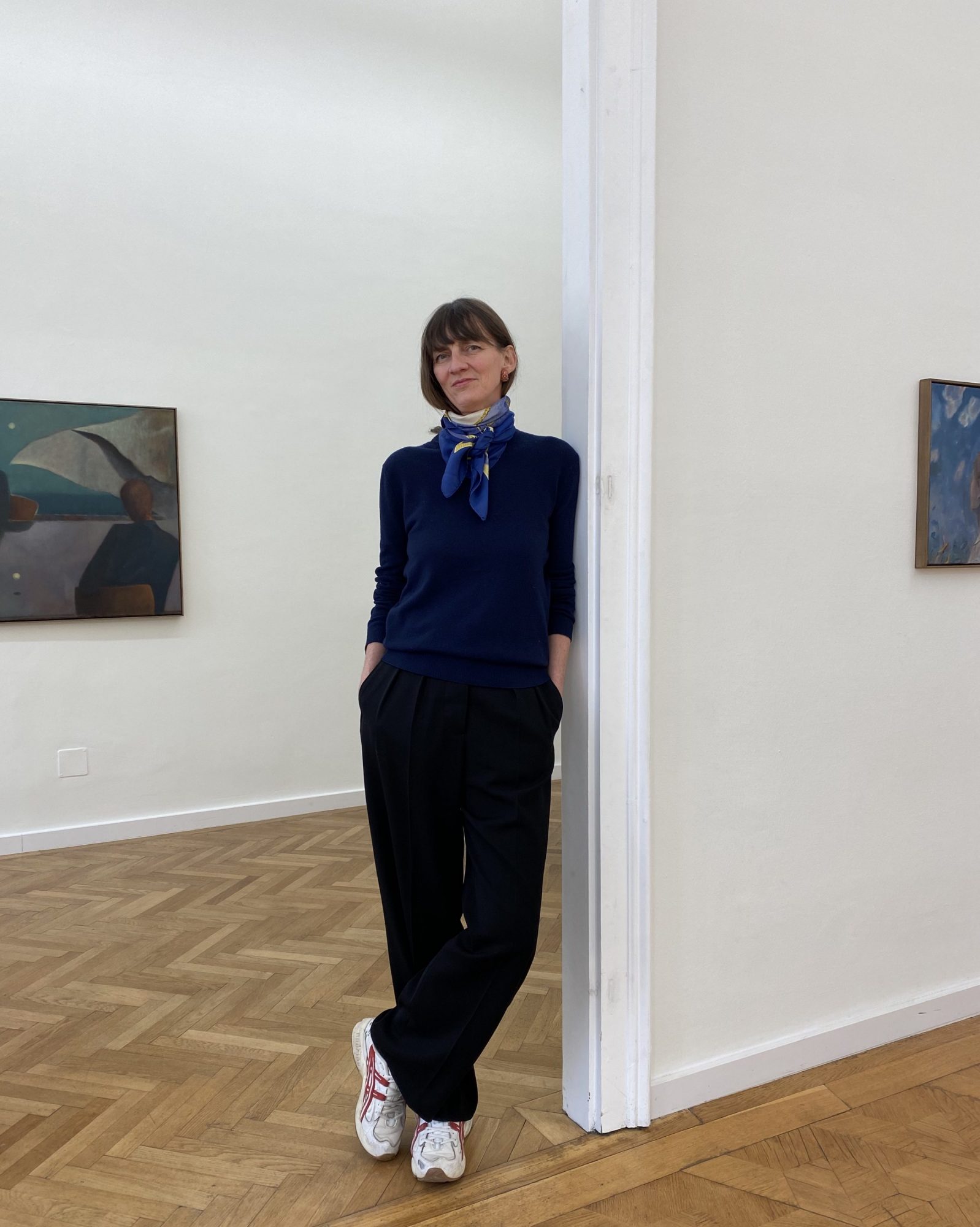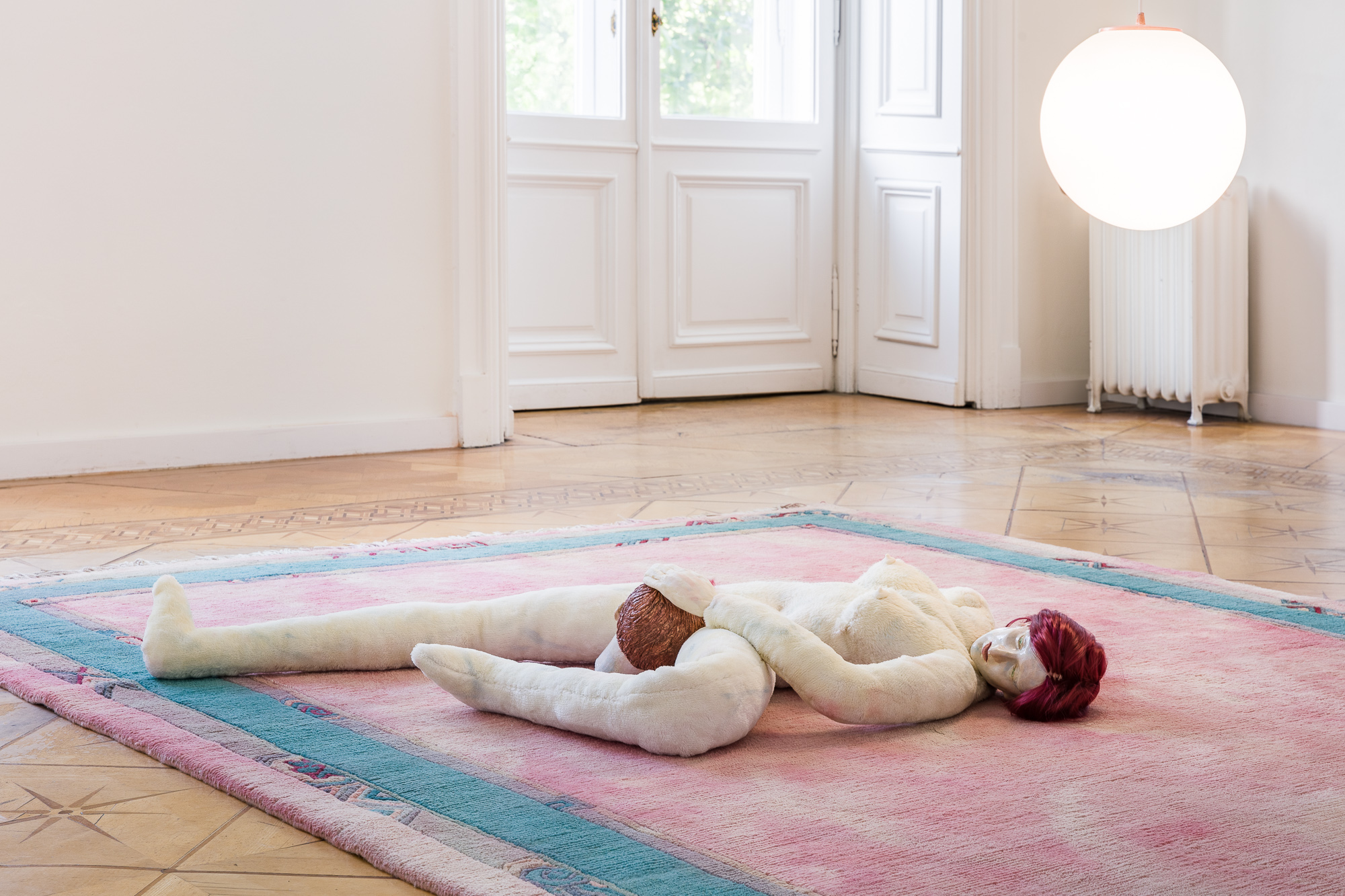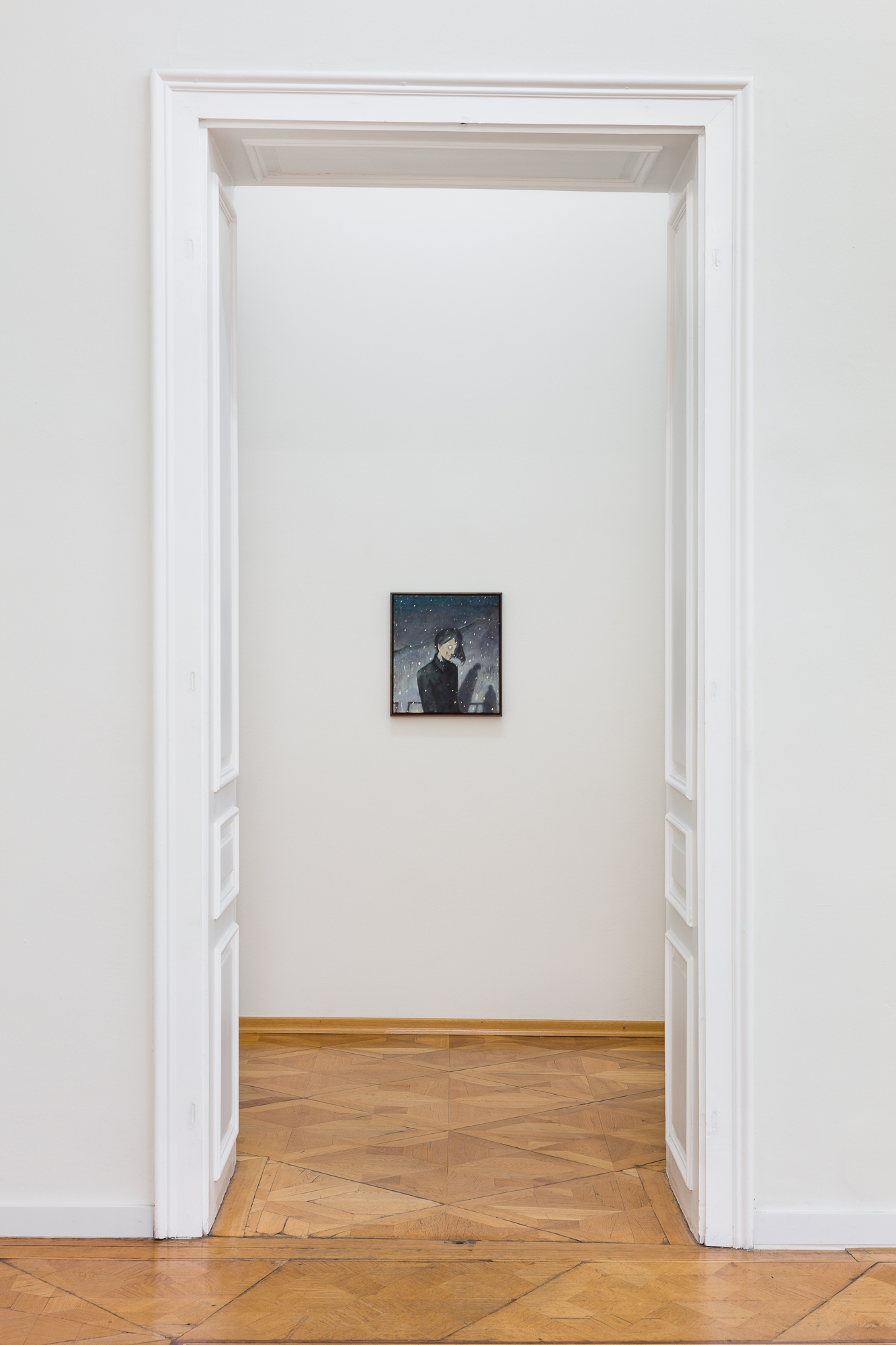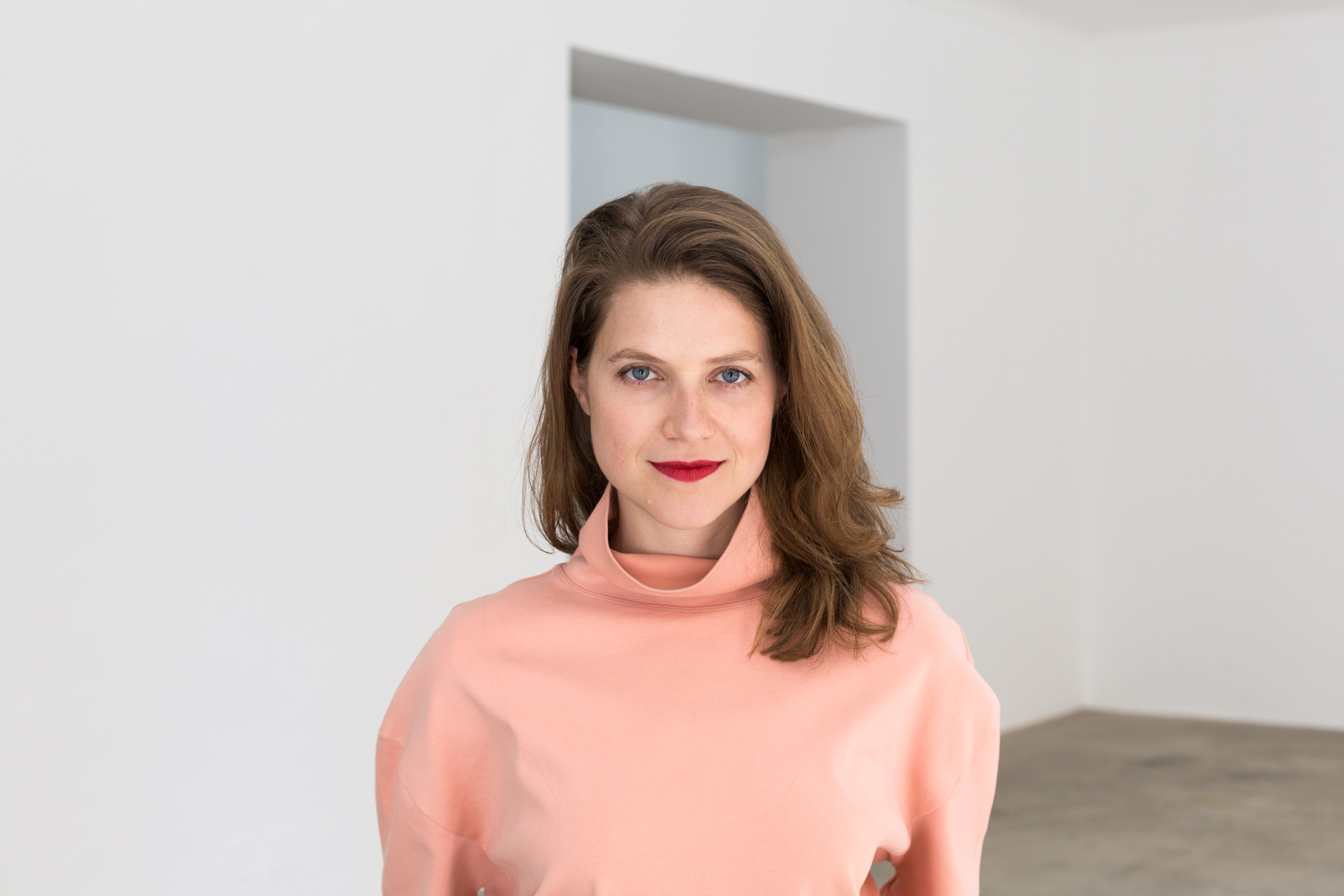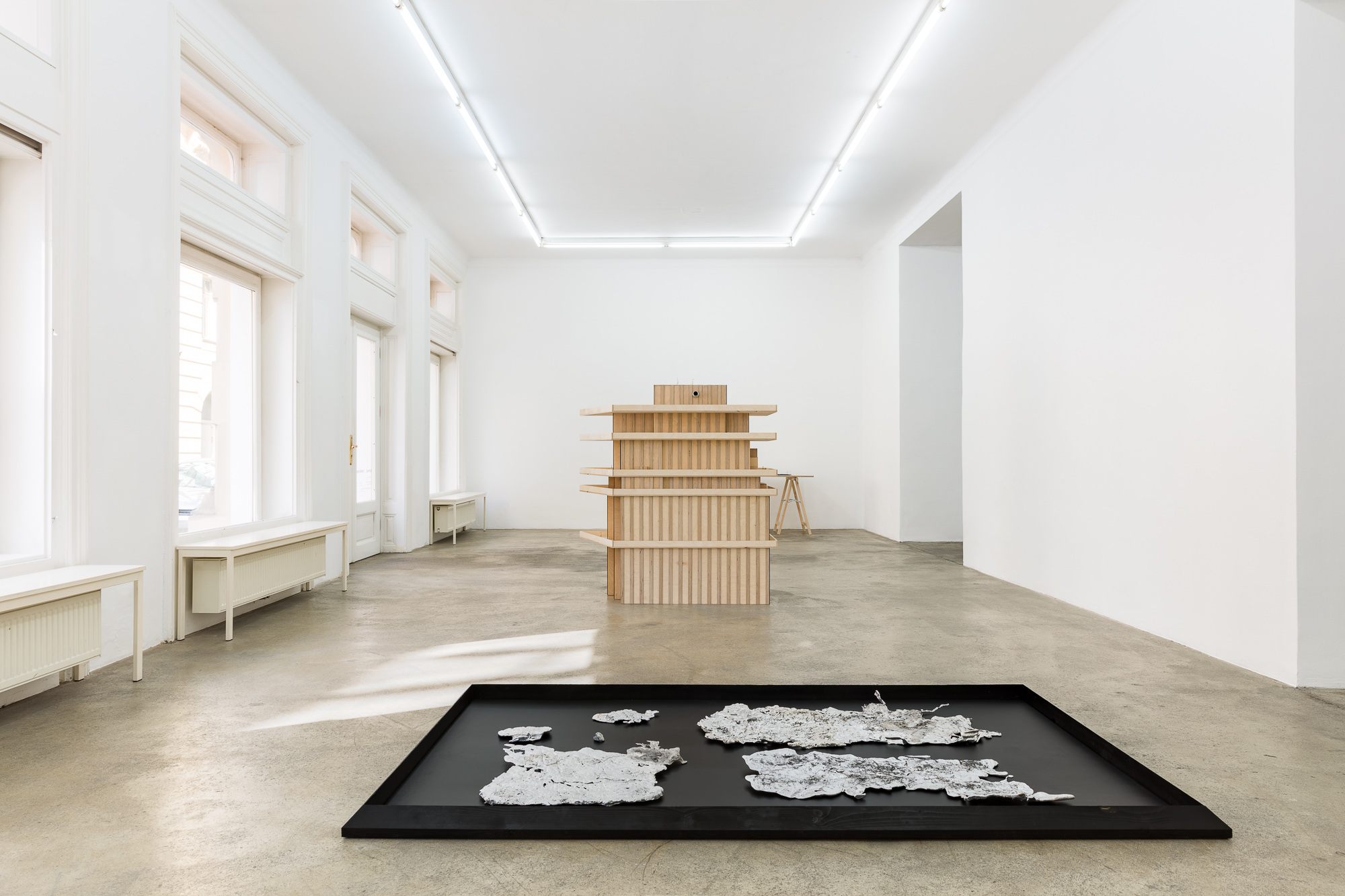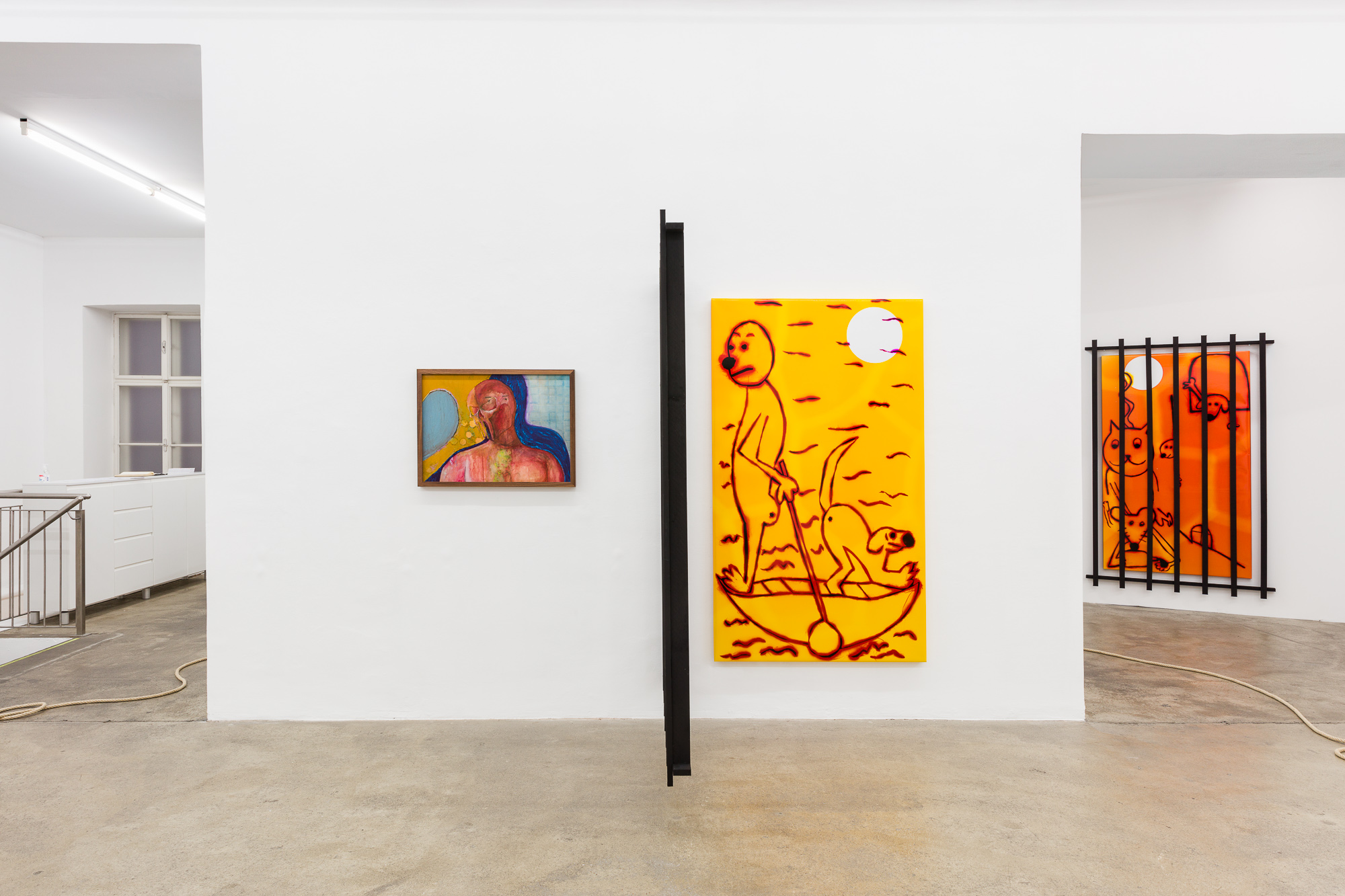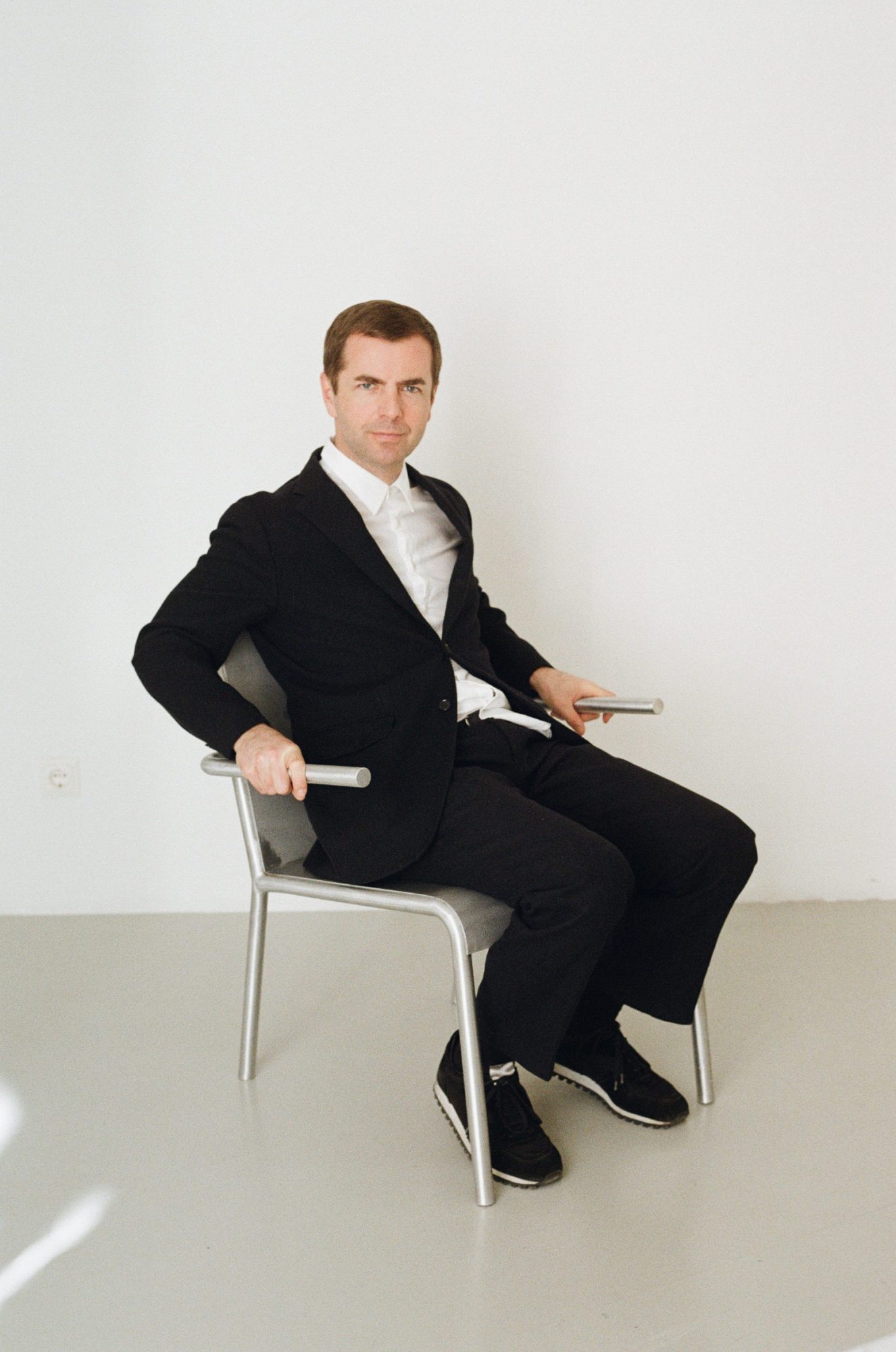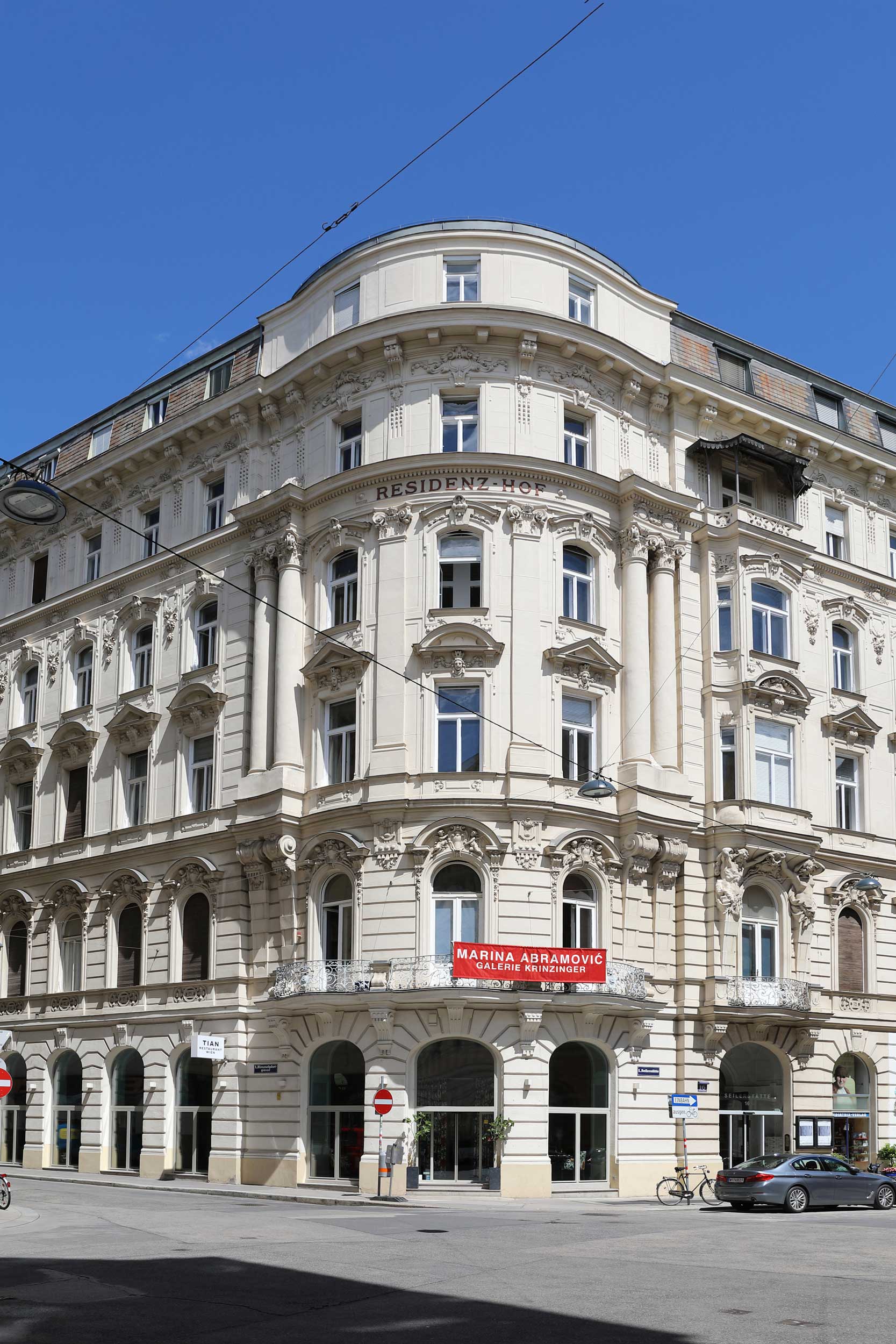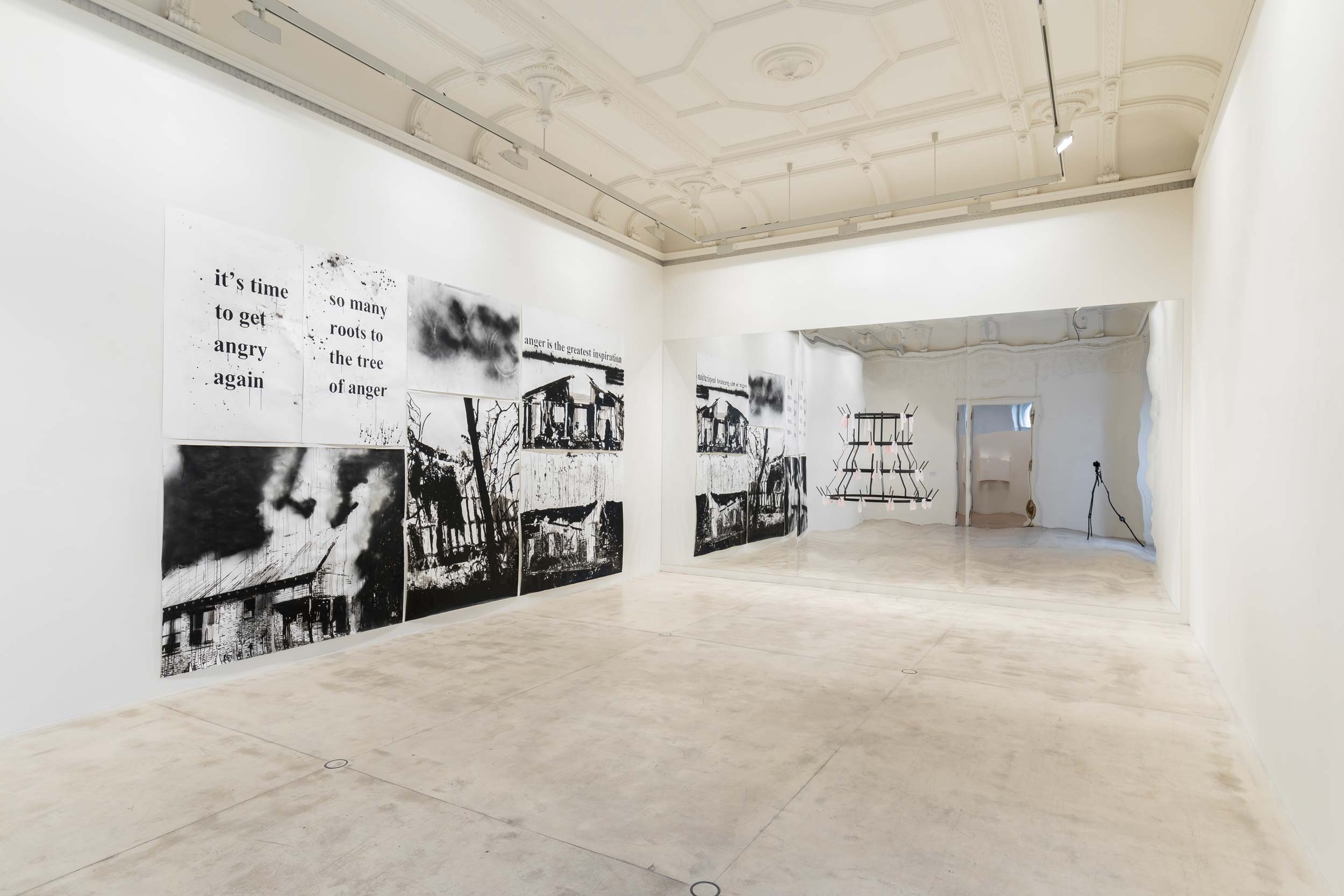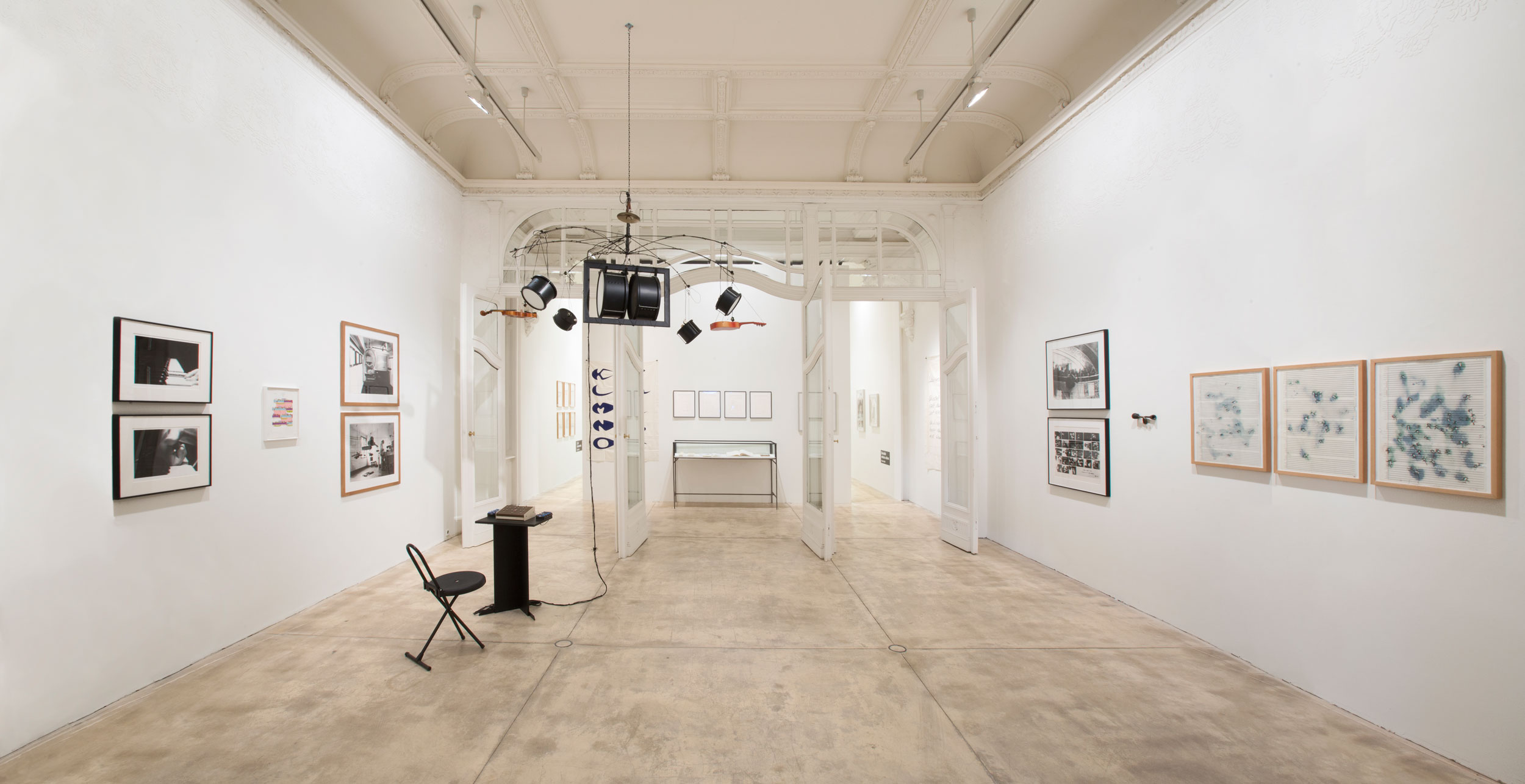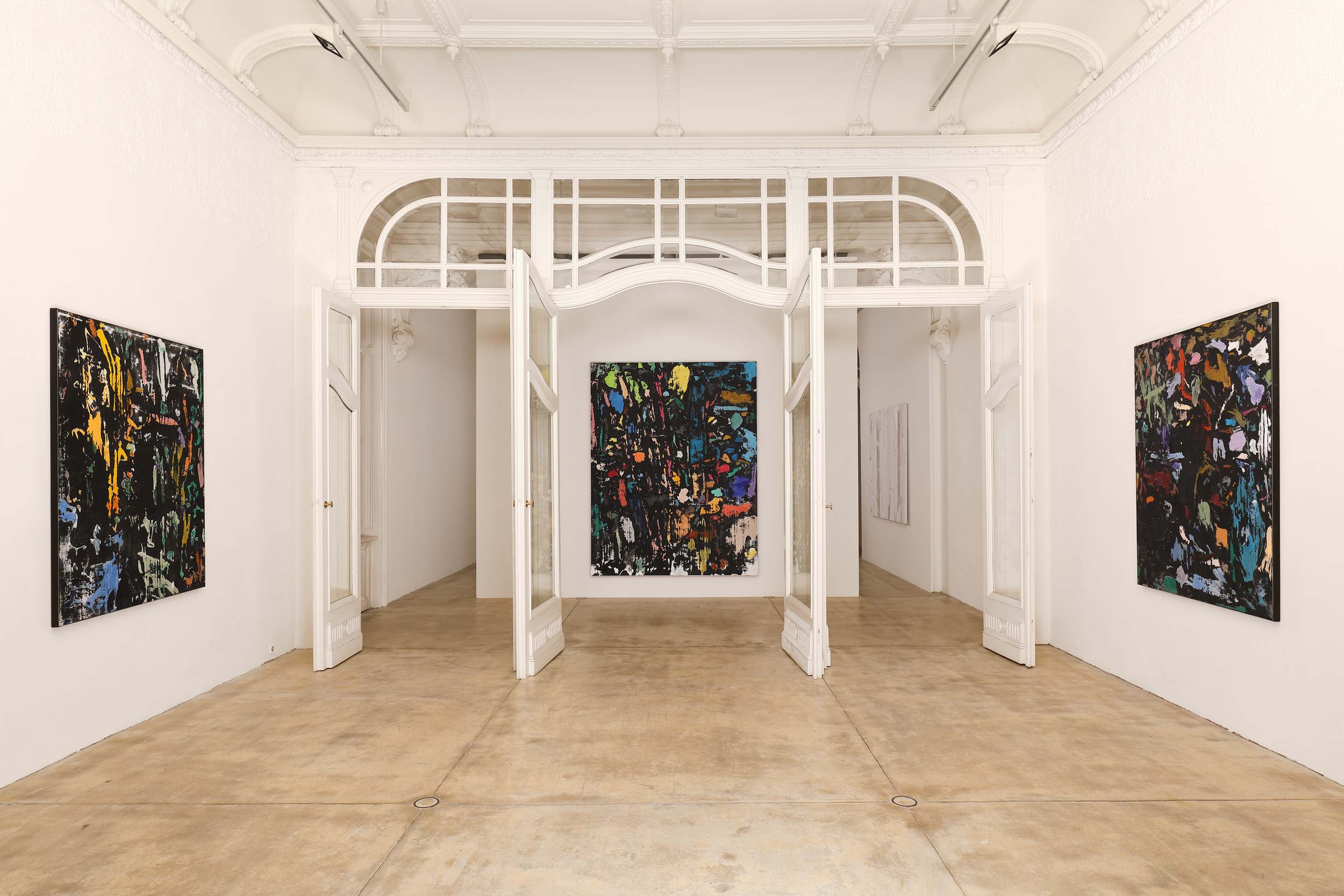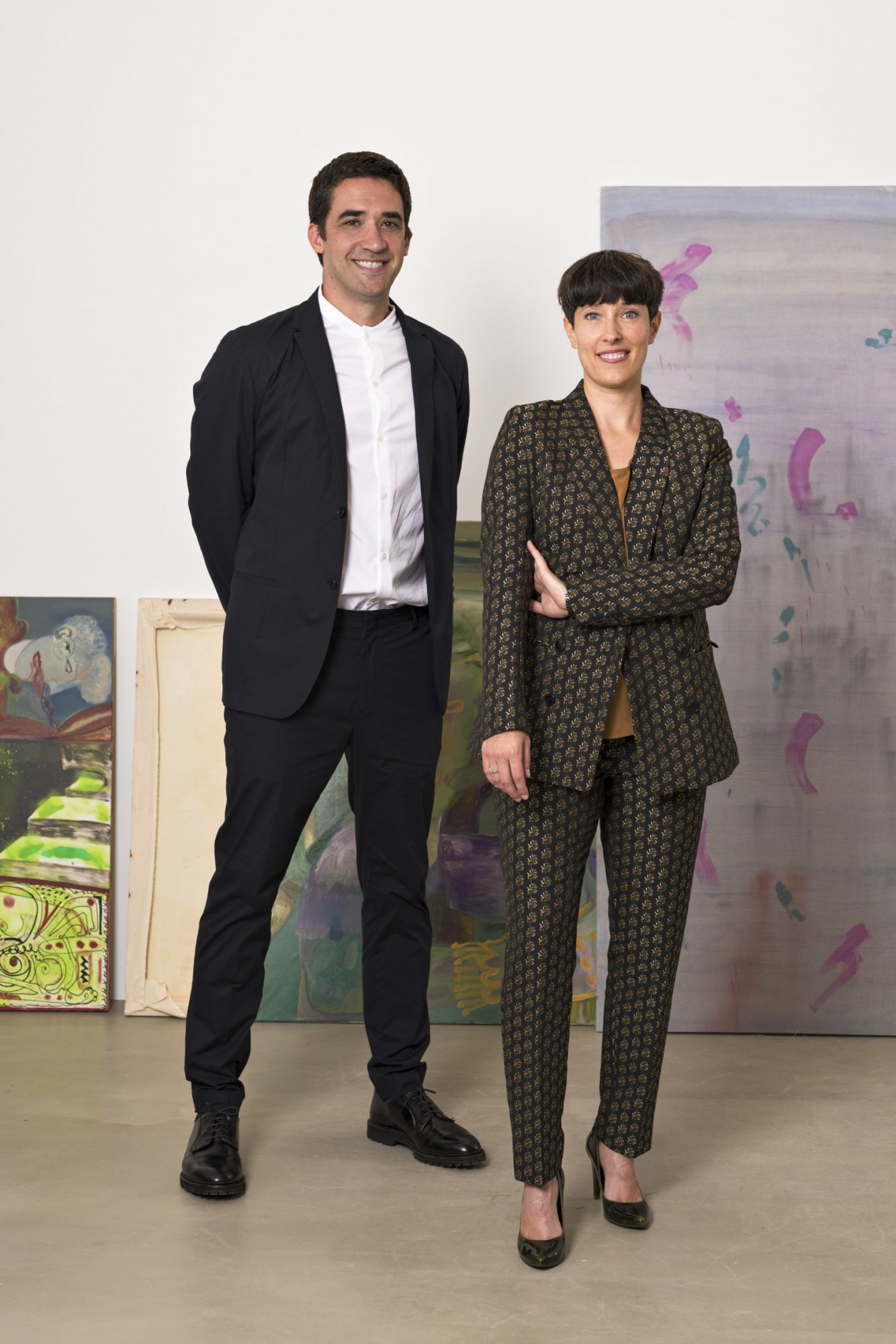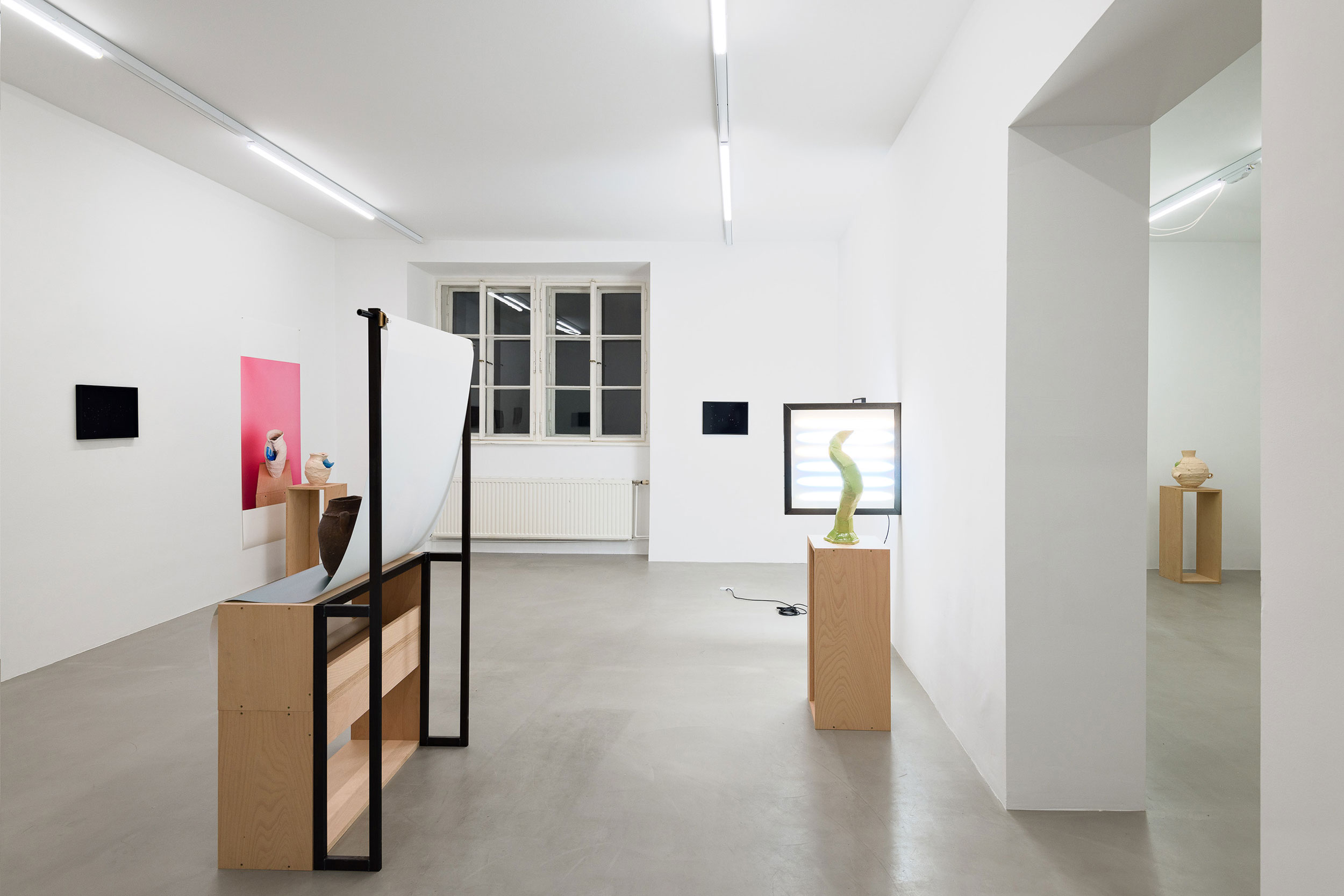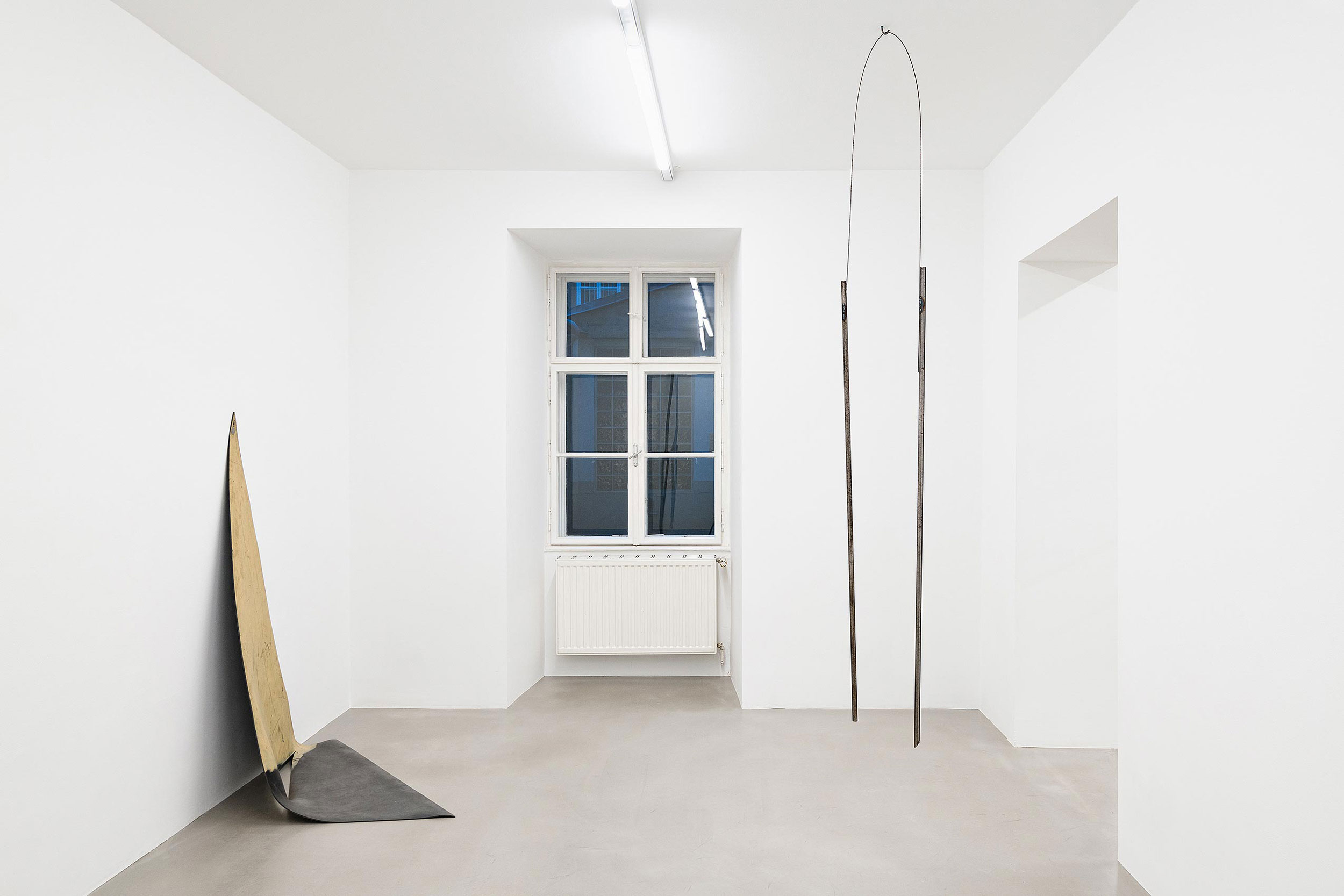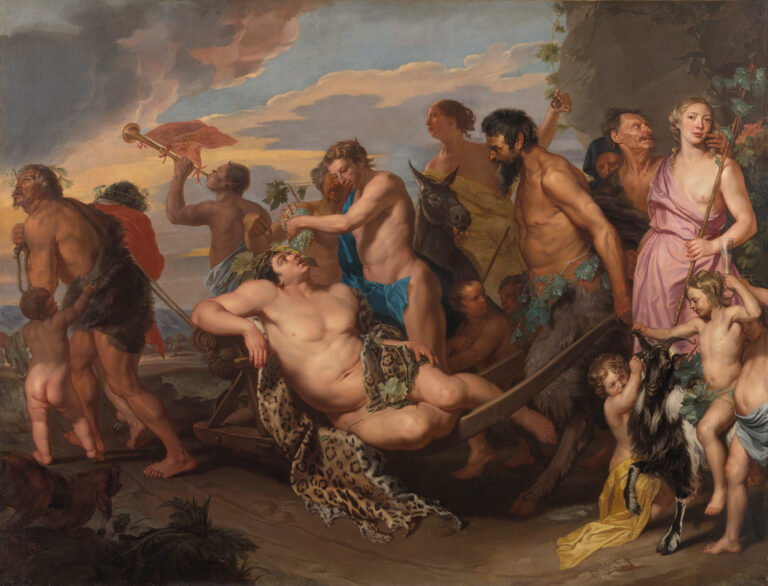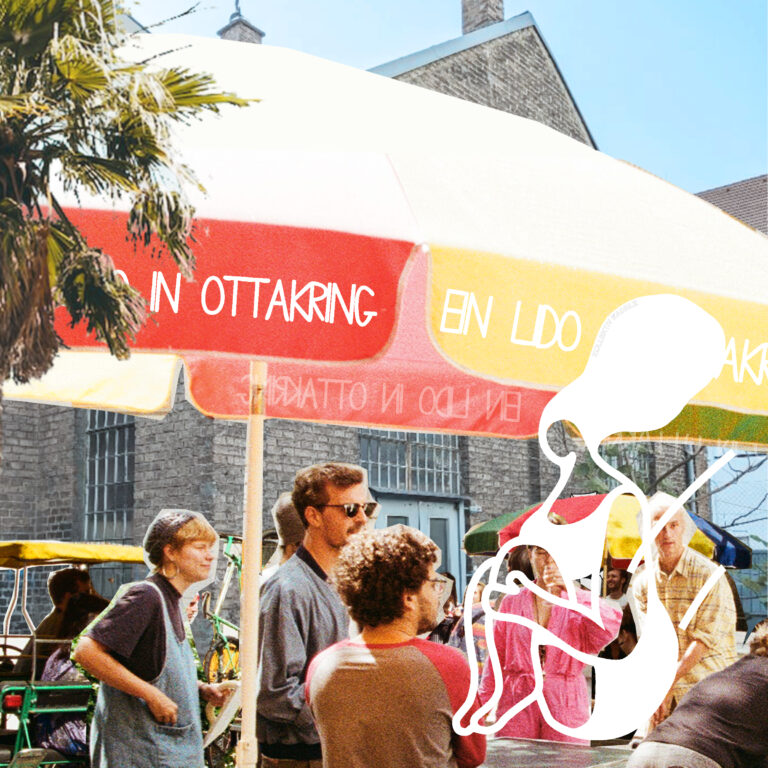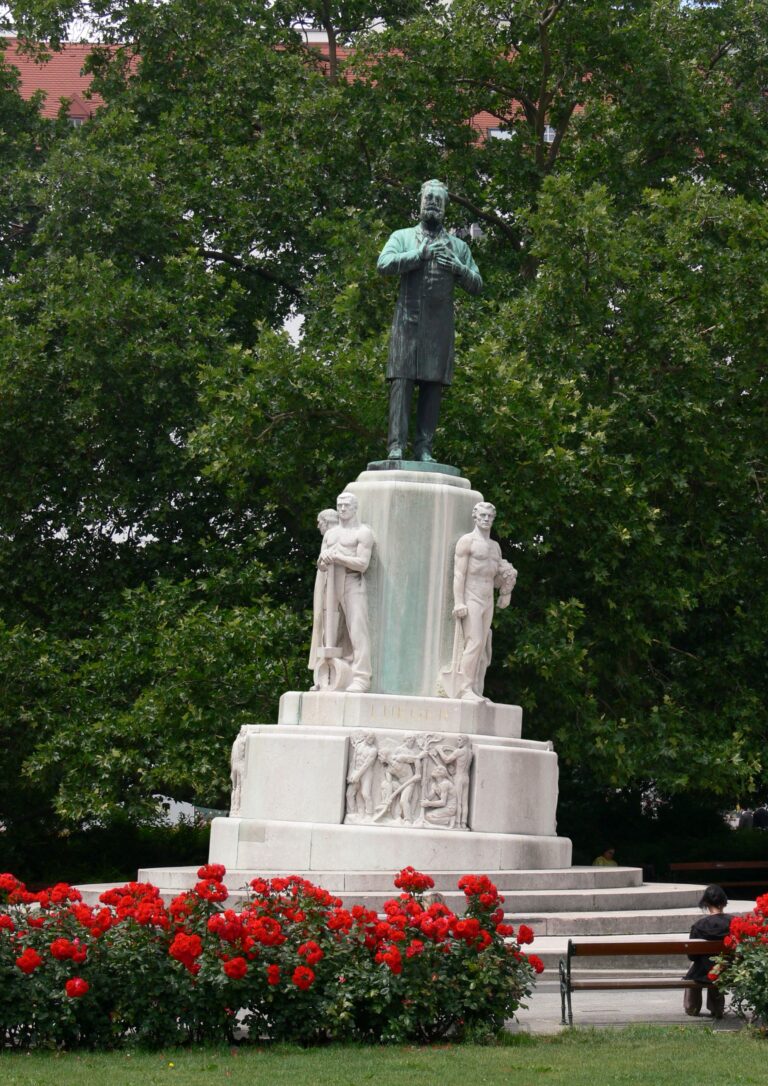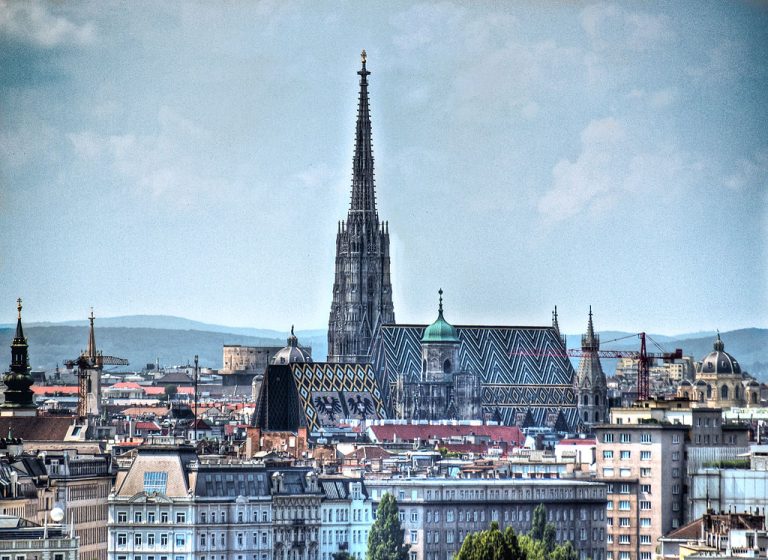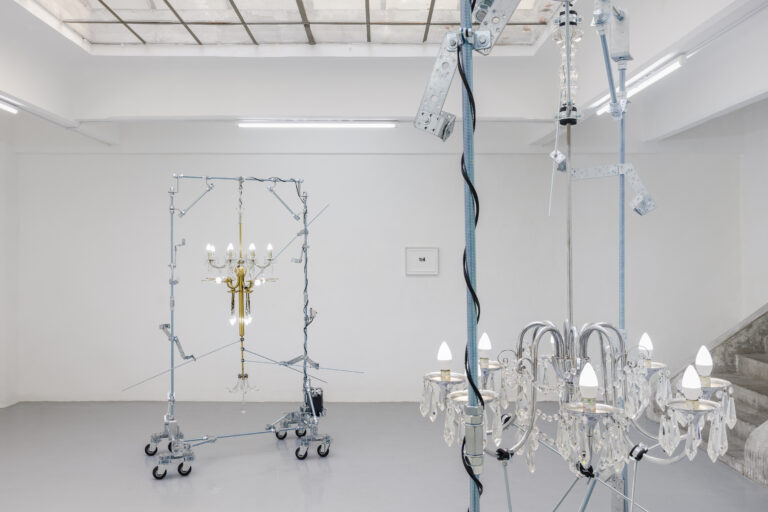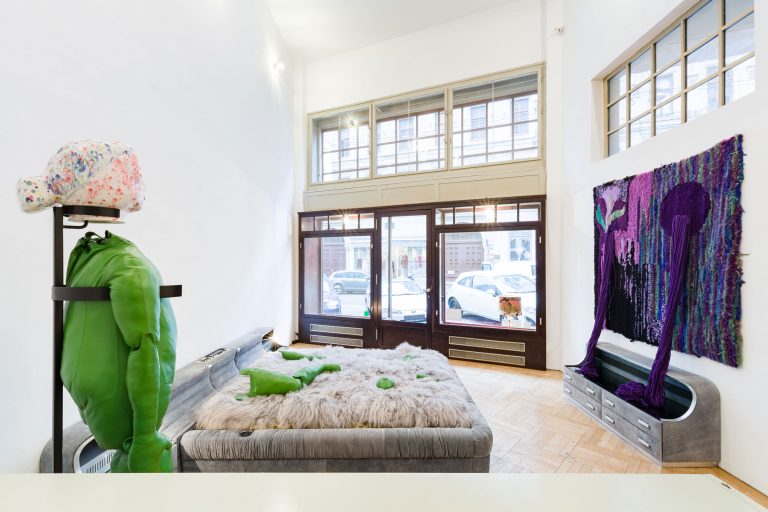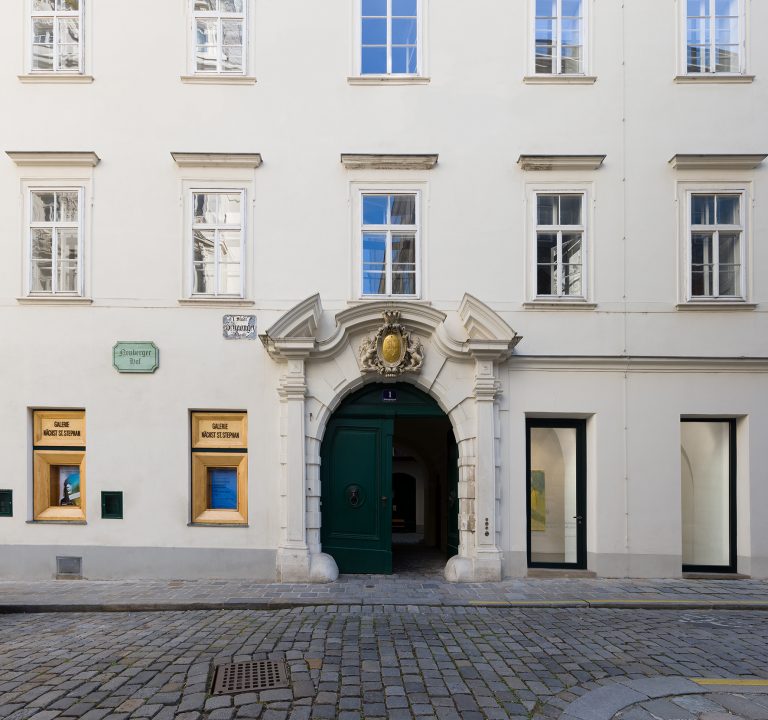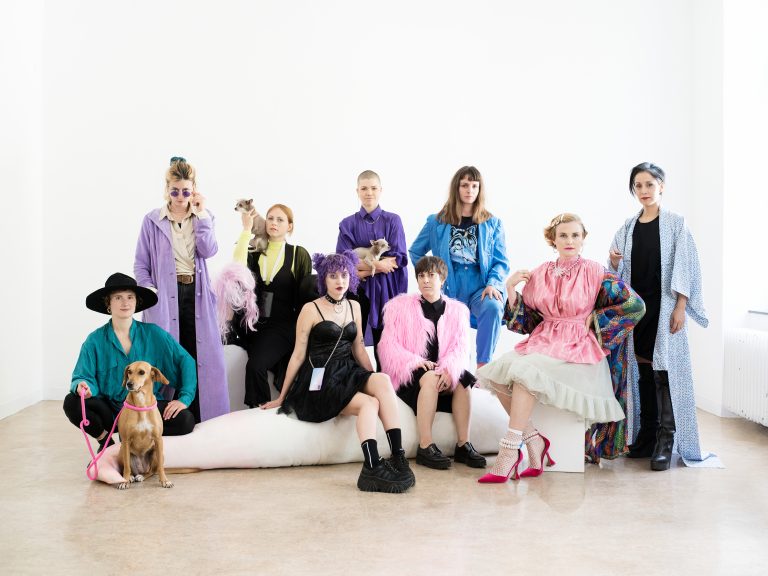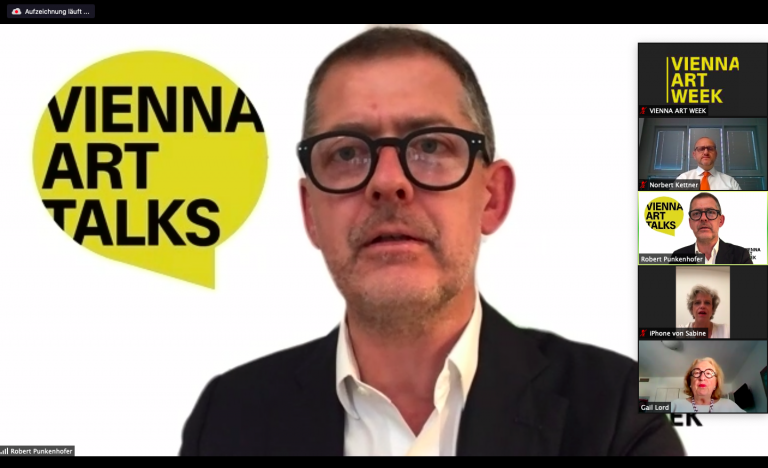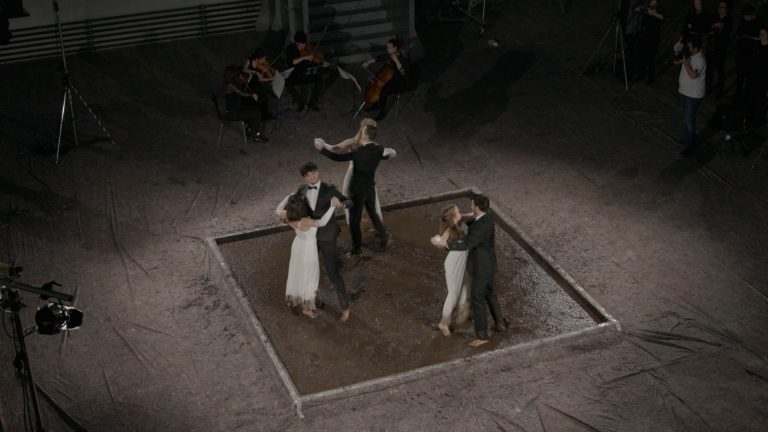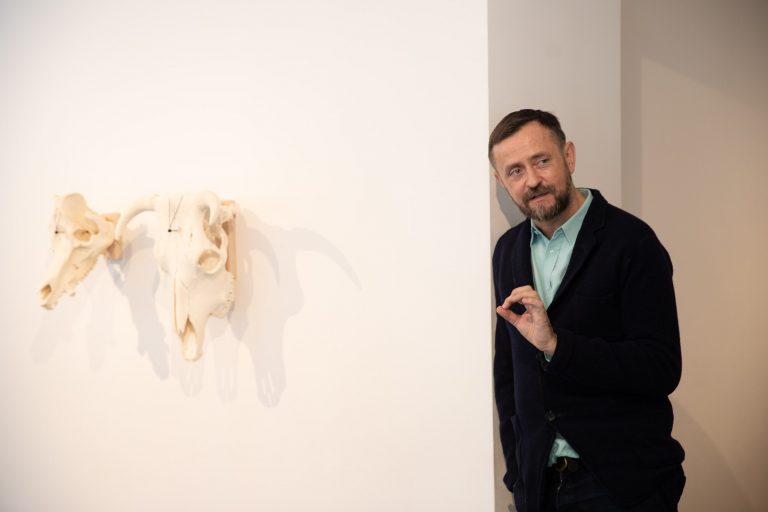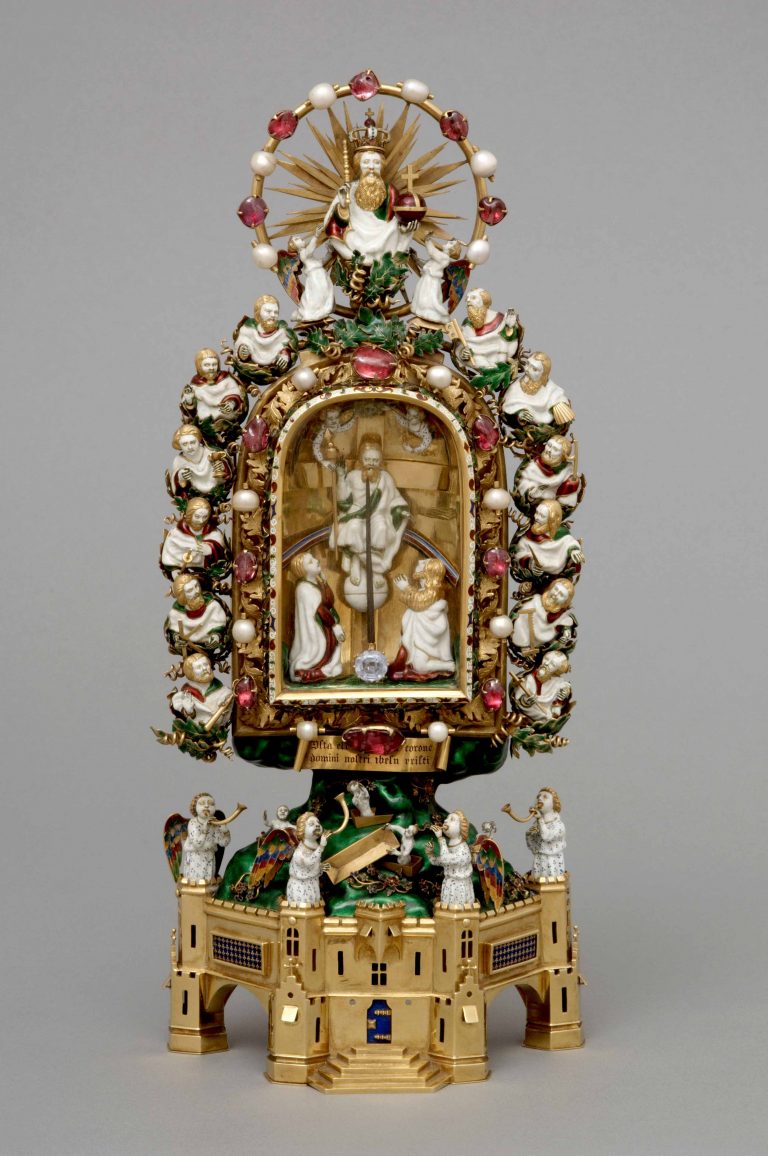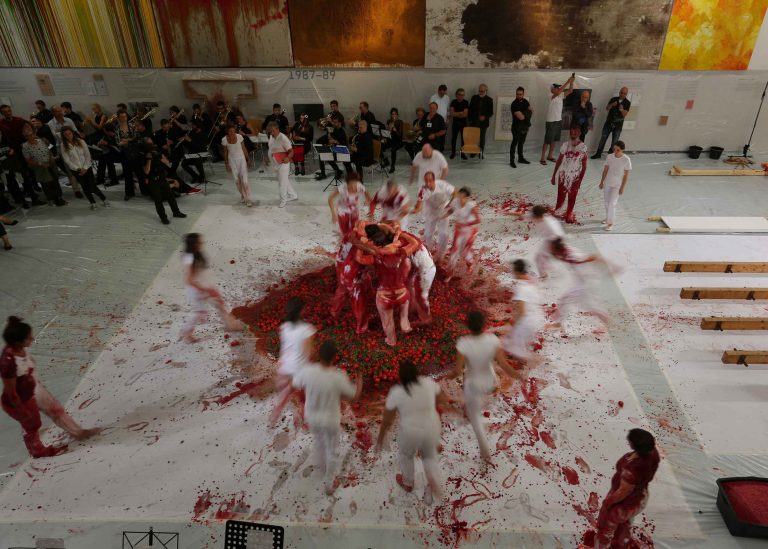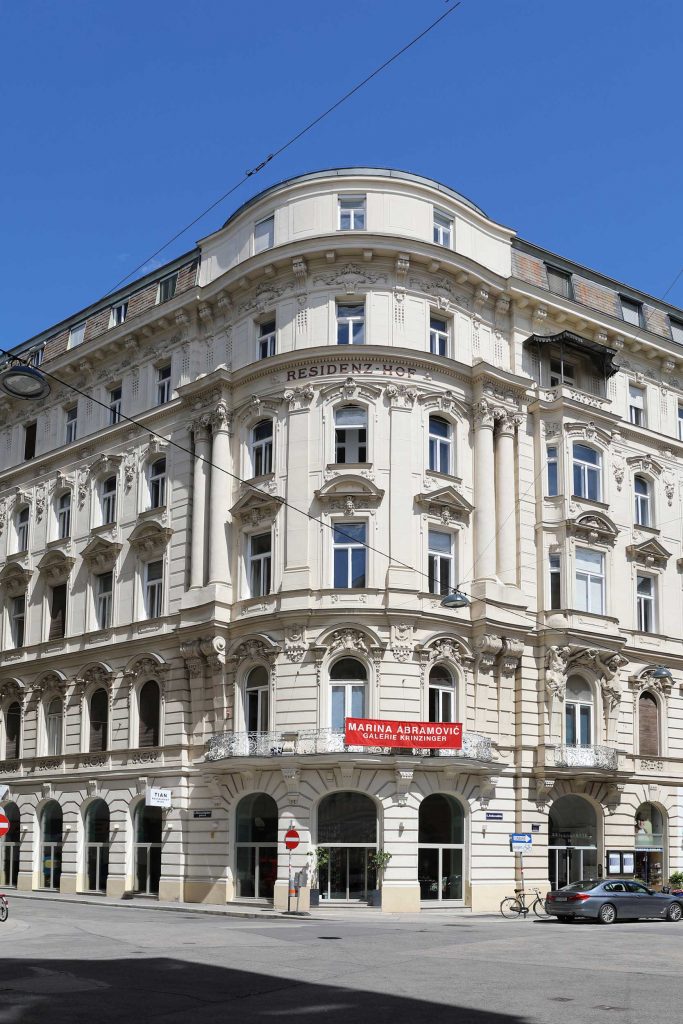
Courtesy Galerie Krinzinger
The starting point of our tour to five top galleries for contemporary art in the heart of Vienna’s city center – situated between Stadtpark and the old town quarter southeast of Kärntner Straße – is the gallery CROY NIELSEN, which is still relatively new in Vienna.
CROY NIELSEN
“The programmatic orientation of our gallery has grown organically over the years and is shaped by personal preferences, but above all by the artistic environment.”
When Henrikke Nielsen and Oliver Croy moved their operations from Berlin to Vienna in 2016 to the Beletage of Palais Dumba on Parkring, they took both continuity and the local context of the Viennese art scene into account. Of the around 20 artistic positions – all of international standing – Nina Beier and Benoît Maire should be mentioned here, who have been represented by CROY NIELSEN since the early days in Berlin. The years in Vienna brought additions such as “local heroine” Elke Silvia Krystufek, but also international artists of the younger generation, who mainly live and work in Vienna, such as Birke Gorm, Nicolas Jasmin or Soshiro Matsubara.
“The fact that we went to Vienna had less to do with the conditions in Berlin than with the potential we see in Vienna. We keep a very close eye on what’s happening here, including at the neighboring University of Applied Arts and the Academy on Schillerplatz.”
Asked about the digitalization push (CROY NIELSEN were co-initiators of the Covid-19-conditioned and purely virtual Interconti Wien fair in January 2021), Henrikke Nielsen remarks: “What has become apparent recently – in addition to the high acceptance of digital offerings – is that the desire to visit galleries has increased again. Because the international fairs have largely been cancelled, our collectors (including those from abroad) have become more attentive to the exhibitions that have taken place in the gallery meanwhile.”
croynielsen.com
1010 Wien, Parkring 4
"The fact that we went to Vienna had less to do with the conditions in Berlin than with the potential we see in Vienna."

Henrikke Nielsen, Photo: Daniel Castells
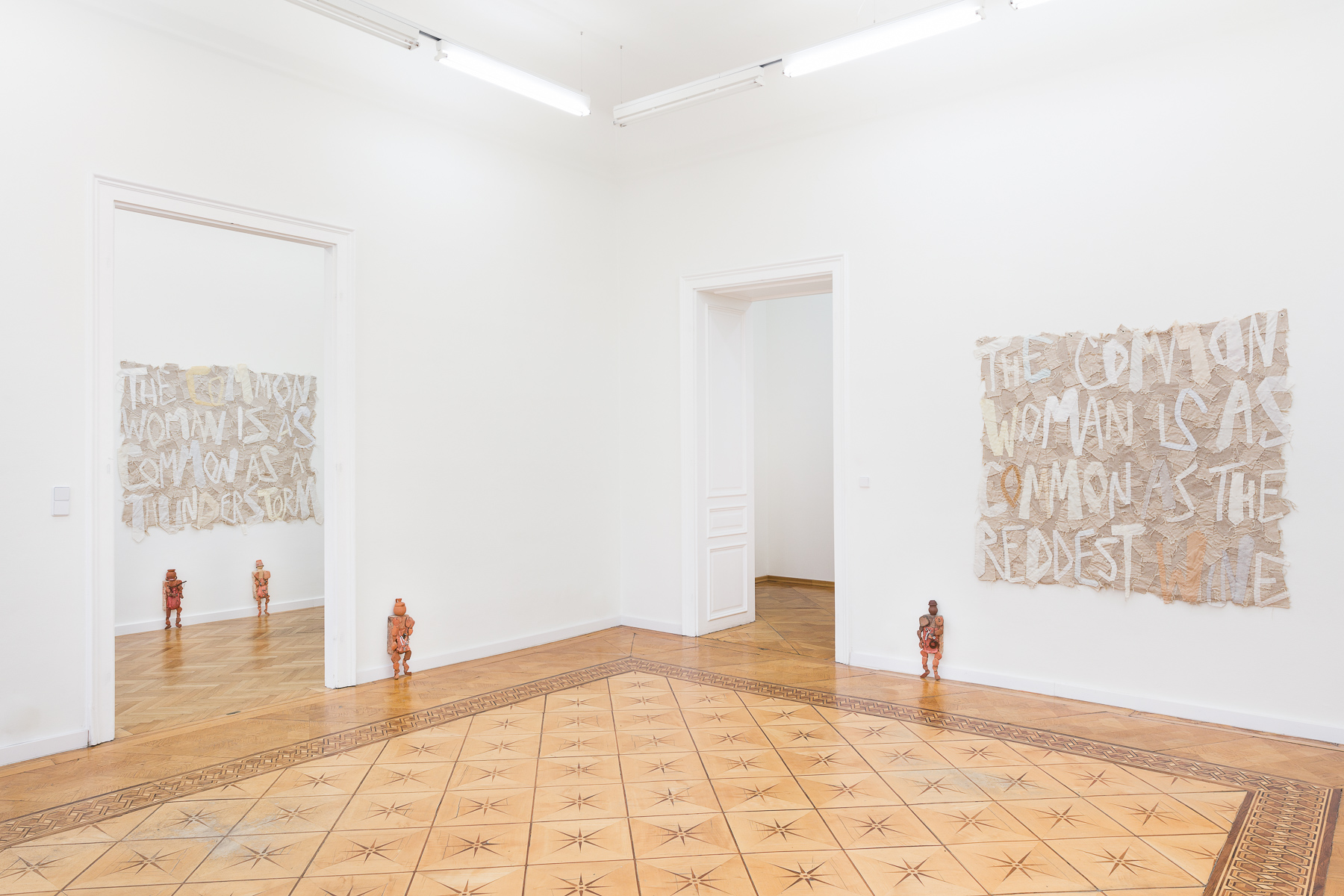
Croy Nielsen
Following the Parkring in direction of the Opera House, we turn right into Liebenberggasse, where the legendary Gartenbaukino is located on the opposite corner. Continuing the alley upwards and passing Palais Coburg, it is only a few steps to the enigmatic-sounding address of our next gallery stop: An der Hülben 3. This is where the Augustinian choir women’s monastery of St. Jakob auf der Hülben was located before it was abolished by Josef II and an apartment building was built. According to historical sources, the monastery’s noble residents were highly educated, self-determined women – perhaps that’s why Grita Insam’s gallery (2005-2011) fit so well here and, since 2017, the up-and-coming gallery SOPHIE TAPPEINER.
SOPHIE TAPPEINER
“I see it as my mission to look at critical and engaged art making from the perspective of intersectional feminism and to build an audience for it.”
After this announcement by the gallery owner, who would be surprised that of the nine artistic positions currently represented according to binary gender assignments, only one belongs to a man? With Sophie Thun, Angelika Loderer, Irina Lotarevich and Jala Wahid – name just a few of the internationally well-connected female artists who consistently pursue a transmedial practice – Tappeiner holds all the trump cards that guarantee a fun, multidimensional engagement with art in appealing spaces.
“It was luck how I got this ground-floor location An der Hülben,” Sophie Tappeiner recalls: “The first time I visited the space was to participate in an Artist Lecture Series of Hans Schabus’s [University of Applied Arts] sculpture class. At that time I hadn’t even planned to open a gallery, but I liked the space so much that I made a comment to Hans about what a good ambience the light-filled room offered. When Angewandte later moved out of there and Schabus called me about it, after long negotiations with the owners, I was promised the space.”
Following her impulse and knowing herself to be in good neighborhood with the excellent galleries of the surrounding, Tappeiner opened hers in June 2017. That year, she was one of those primarily female “thirtysomethings” who dared to start a new business in this risky professional field and literally sparked a boom with it. Suddenly it was hip again to wander through galleries for a younger audience. But it is not only the newly acquired clientele that appreciates the gallery owner’s expertise; experienced visitors also like to be guided through the installation-staged exhibitions by Tappeiner personally and enjoy to be carried away by her conviction for the works of her artists.
sophietappeiner.com
1010 Wien, An der Hülben 3
"I see it as my mission to look at critical and engaged art making from the perspective of intersectional feminism and to build an audience for it."

Courtesy and Copyright Sophie Tappeiner
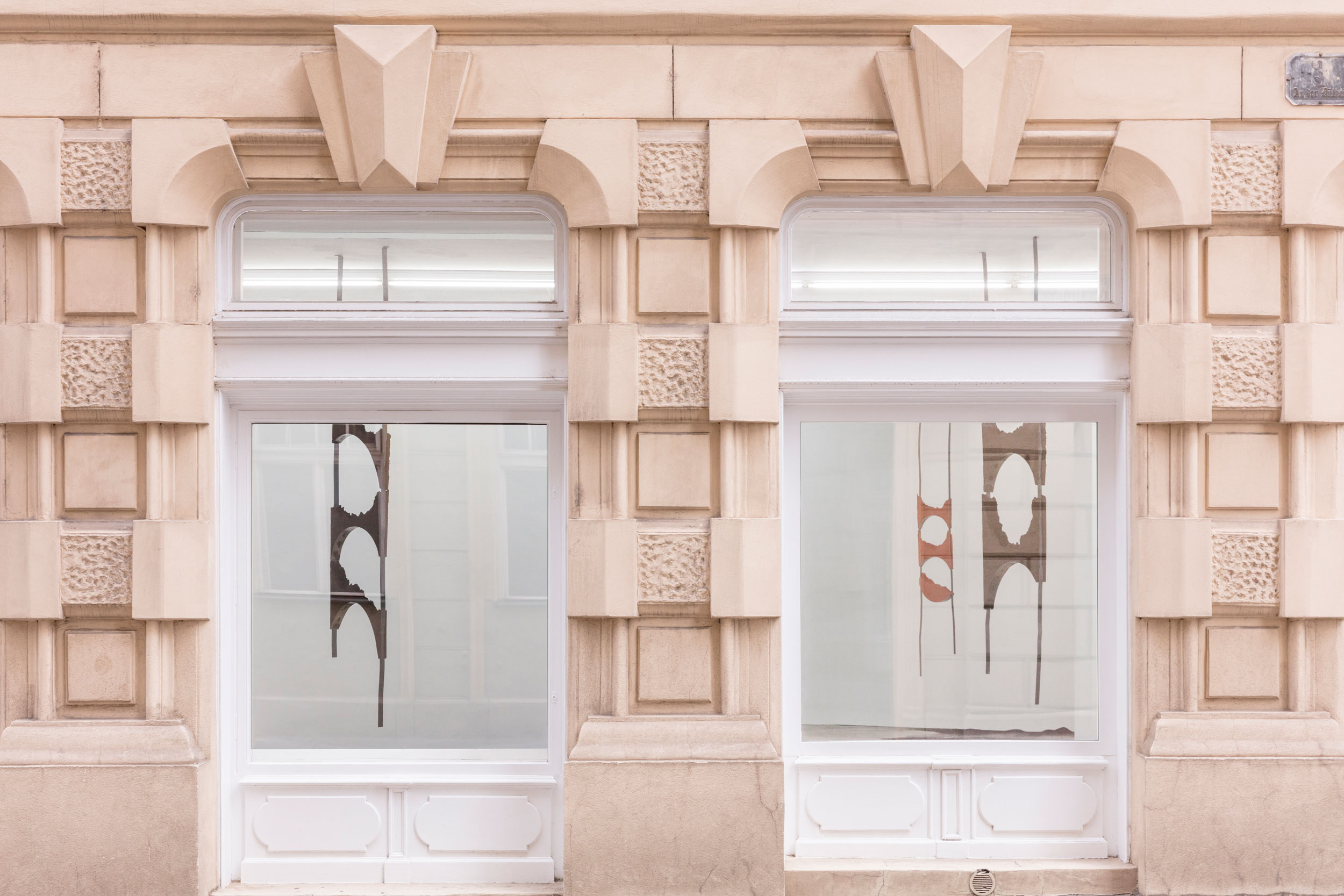
Angelika Loderer, Quiet Fonts at Sophie Tappeiner, Foto: Kunst-Dokumentation.com
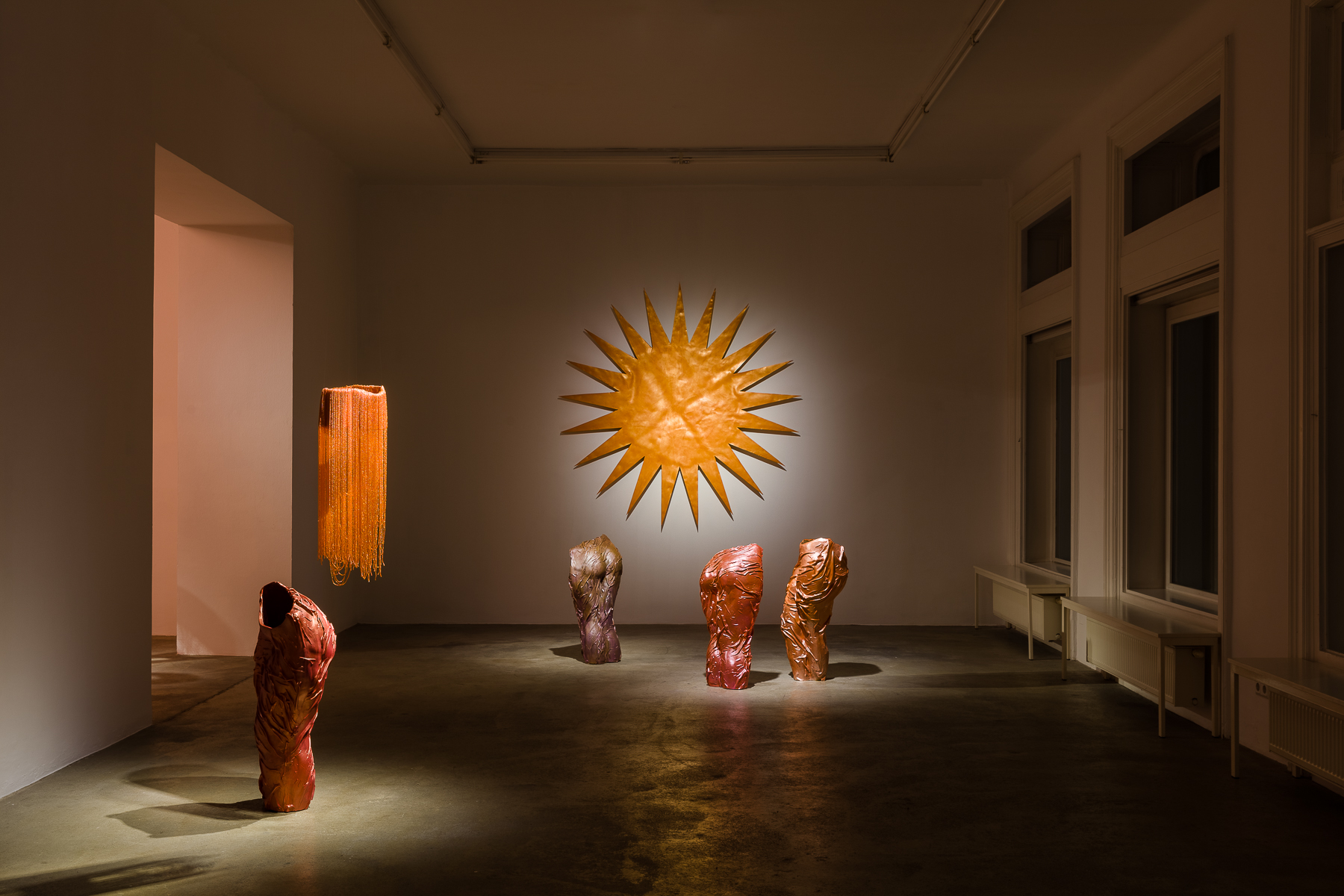
Jala Wahid, Newroz, installation view, Sophie Tappeiner, 2019, Foto: Kunst-Dokumentation.com
One of the top galleries mentioned in the immediate vicinity of Galerie SOPHIE TAPPEINER is Galerie LAYR, which is located within sight on the ground floor of the corner building Seilerstätte 2 / An der Hülben 6. The building, built in 1860 by Ferdinand Fellner in place of the old building, the house of the “Lukas Knaffel’sche Universitätsstiftung” (Lukas Knaffel’s University Foundation), true to its foundation purpose from the 17th century, is to this day the seat of several Slovenian cultural institutions and has definitely been upgraded with the Emanuel Layr Gallery forming a bridge to the present.
LAYR
“I entered the gallery business as a student because I wanted to work actively and directly with art or artists and make exhibitions, which would not have been possible so quickly in any other field – especially not in Vienna at the turn of the millennium.”
Founded together with Thomas Wüstenhagen in 2005 as Galerie LayrWüstenhagen near the Museumsquartier, it has been run by Emanuel Layr alone under the label “LAYR” since 2011. In 2015 it moved to the prestigious premises in the 1st district and since 2017 there is a branch in Rome.
As one of the few young, innovative galleries founded in Vienna at the beginning of the new millennium, Emanuel Layr has succeeded in around 15 years of gallery work internationally with his ambitious program, which includes positions such as Anna-Sophie Berger, Gaylen Gerber, Lena Henke, Nick Oberthaler or Philipp Timischl. In addition, the gallery is the exclusive representative of the already deceased Slovak neo-avant-garde artist Stano Filko and the young Belgian-American artist Cécile B. Evans.The gallery thus lives up to its claim of acting as an international hub for art of different generations and cultural or discursive backgrounds, and also addresses a similar audience. What significance would digital forms of communication have in this context?
“We see social media and other digital forms of communication as tools to convey content – as a supplement to the exhibitions and classic media such as websites, newsletters, etc. Sometimes it is possible to develop something together with the artists in these places, but otherwise we resort to photography and video documentation for this purpose. The fact that, for example, podcasts and videos can be produced easily and by oneself, of course helps to spread the exhibitions faster and further…”
emanuellayr.com
1010 Wien, Seilerstätte 2
„I entered the gallery business as a student because I wanted to work actively and directly with art or artists and make exhibitions."

Emanuel Layr, Photo: Katarina Šoškić

Lena Henke, Babysteps into Masochism, 2020, Installation view, LAYR, Vienna, Courtesy of the artist and LAYR, Vienna

Gaylen Gerber, 2020, Installation view, LAYR, Vienna.
Photos: Gaylen Gerber and Paul Levack
Courtesy of the artist and LAYR, Vienna
A few steps from LAYR, down Seilerstätte in the direction of Schwarzenbergplatz, lies the former Ronacher establishment, today the musical venue of Vereinigte Bühnen Wien, and to the right vis a vis, on the corner of Himmelpfortgasse, the “Residenzhof”, also built by the architects Fellner & Helmer. The state rooms of Seilerstätte 16 housed the officers’ casino of the Residenz Club at the time of its founding and have been the home of one of Austria’s most renowned galleries since 1986, the Galerie KRINZINGER.
KRINZINGER
“When I started here in the 1980s, there were basically only us three women in this area.” …
… Ursula Krinzinger tells us, referring to Rosemarie Schwarzwälder (Galerie nächst St. Stephan), Grita Insam, the gallery owner who passed away in 2012, and herself. “Back then, we shared everything in terms of know-how with each other, supported each other, the idea of competition was far from our minds. Today there is a very different pressure in the ever-changing field and the global art market that has become almost unwieldy. The future will show, but I have a feeling that the pandemic will bring us closer together again in this quarter.”
Founded in Vienna in 1986 by art historian Dr. Ursula Krinzinger after Bregenz and Innsbruck (1971 and 1972, respectively) and run jointly with her son Thomas since 2021, the gallery focuses on performative and body-based artistic practices. Starting with Viennese Actionism, through the groundbreaking performances of the young Marina Abramović, first presented in Innsbruck as early as 1975, to the U.S. artists Chris Burden and Mike Kelley, known only to a specialist audience in Austria in the early 1990s, the gallery quickly established itself as one of the top addresses of its kind.
“In nearly 500 exhibitions, numerous symposia, guest curations and residencies, we have managed to position Austrian art internationally and bring international greats to Vienna,” Ursula and Thomas Krinzinger are pleased to say.
The list of artists, which also includes national and international artists of the younger generation, reads like a Who’s Who of contemporary art and yet reflects the close personal relationship, the intensive exchange between the two gallery owners and their artists. Mother and son agree that the concept of the gallery on Seilerstätte and that of the “experimental field” KRINZINGER PROJEKTE in Schottenfeldgasse, which has existed since 2002, will continue to be fully exploited and accepted in the future.
galerie-krinzinger.at
1010, Seilerstätte 16
"When I started here in the 1980s, there were basically only us three women in this area. Back then, we shared everything in terms of know-how with each other."

Courtesy Galerie Krinzinger
Walking along Weihburggasse towards Kärntnerstraße, we visit the newcomer among Vienna’s inner city galleries as the last highlight of our tour: WONNERTH DEJACO. From Franziskanerplatz, you enter through a picturesque archway into the curved Old Town alley that houses the gallery and is named after one of Vienna’s oldest ballrooms – Ballgasse.
WONNERTH DEJACO
“Our gallery should be a place of personal encounter and discourse!”
In September 2020, during the brief autumnal upheaval of the first pandemic year, Victoria Dejaco and Michael Wonnerth-Magnusson opened their gallery space in the courtyard section of the late Baroque bourgeois house “Zum alten Blumenstock” at Ballgasse 6, which had already been home to the legendary Galerie Peter Pakesch in the 1980s. After years of working or curating for galleries, art associations and collections, the two art historians decided to make common cause: founding a gallery that focuses on dialogue, appreciation and professionalism in a personal atmosphere.
As soon as you enter the Pawlatschen-decorated courtyard, your gaze falls unobstructed through a large transom window onto the gallery owners’ desk. “We have deliberately set up our office to be visible to all and as a transit area – it is a multifunctional space that is a workplace, storage and the heart of communication at once”, explains neo-gallerist Victoria Dejaco.
During our conversation, there is a vividness of comings and goings. People greet each other amicably and new guests of the gallery are also introduced to each other whenever possible. For the currently seven gallery artists Philipp Fleischmann, Katharina Höglinger, Axel Koschier, Thea Moeller, Georg Petermichl, Ellen Schafer and Constanze Schweiger WONNERTH DEJACO is a kind of home base from where networking and lively discourse takes place .
Michael Wonnerth-Magnusson recalls, “From my experiences working with artists from Vienna’s vibrant off-space scene, I realized that there was an urgent need to bring more of them to the attention of a broader public – in the domestic cultural scene, but also on the international art market – … and in Victoria I found the perfect counterpart for this, because her goal is also to make a strong case for the vibrant Austrian scene, which is partly underrepresented in Vienna’s gallery landscape.
wonnerthdejaco.com
1010, Ballgasse 6
(Maria Christine Holter)
"From my experiences working with artists from Vienna's vibrant off-space scene, I realized that there was an urgent need to bring more of them to the attention of a broader public."

Courtesy Wonnerth Dejaco 2021, Photo: Peter Mochi
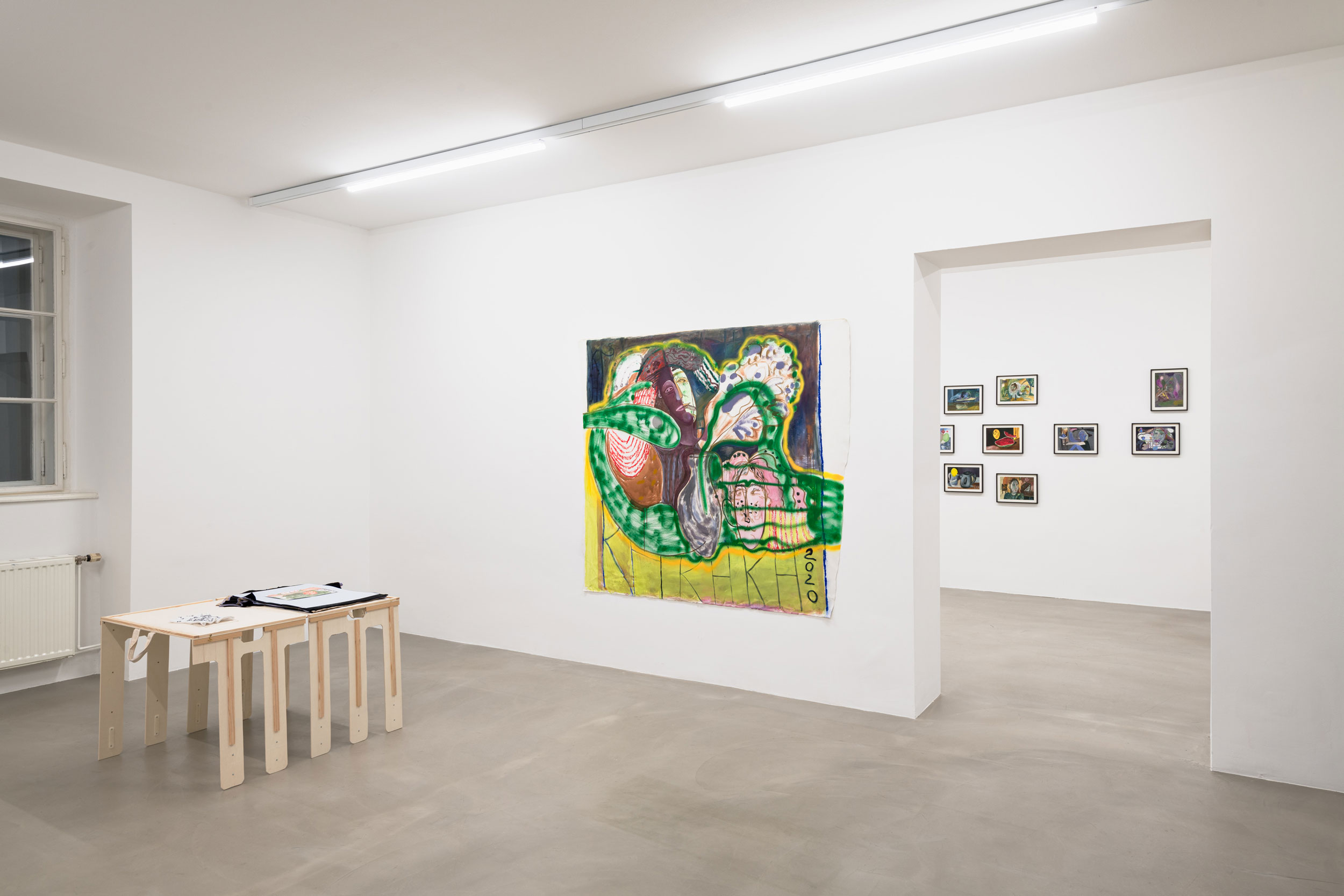
Katharina Höglinger, Zunge verlieren (losing tongue), Ausstellungsansicht, Wonnerth Dejaco, Wien 2021, courtesy Wonnerth Dejaco and the artist. Foto: Peter Mochi

